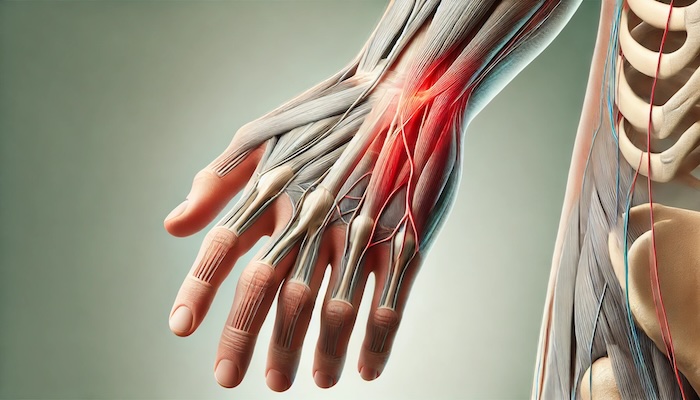
Wrist and hand injuries, such as sprains and strains, are common among people of all ages. These injuries can occur due to falls, overuse, or direct trauma, affecting everyday activities and professional tasks. At Precision Pain Care and Rehabilitation, the focus is on providing comprehensive and minimally invasive treatments to address such conditions, using interventional pain management techniques to help patients regain functionality and reduce discomfort.
What Are Sprains and Strains?
- Sprains occur when ligaments—bands of tissue connecting bones—are stretched or torn.
- Strains involve damage to muscles or tendons, often caused by overuse or sudden force.
These injuries may range from mild to severe and can involve symptoms like swelling, pain, bruising, limited mobility, and a feeling of weakness in the wrist or hand.
Causes and Risk Factors
Wrist and hand injuries often result from:
- Falls: Stretching the hand to break a fall can lead to ligament damage.
- Repetitive Use: Sports like tennis or activities requiring prolonged typing can strain tendons.
- Trauma: Accidents or direct blows to the wrist or hand.
Chronic conditions, such as arthritis or carpal tunnel syndrome, may also contribute to discomfort or predispose individuals to these injuries.
Diagnosis and Assessment
Effective treatment starts with an accurate diagnosis. Physicians at Precision Pain Care and Rehabilitation use:
- Physical Exams to assess range of motion and pinpoint tenderness.
- Imaging Studies such as X-rays, MRI, or ultrasound to evaluate ligament or muscle damage and rule out fractures.
- Functional Testing to identify specific deficits caused by the injury.
Treatment Options in Interventional Pain Management
Precision Pain Care and Rehabilitation emphasizes non-surgical, individualized approaches for treating wrist and hand pain:
- Immobilization and Rest
Splints or braces are often used to stabilize the joint and facilitate healing.
- Physical Therapy
Strengthening exercises, stretching, and ergonomic adjustments help restore function and prevent recurrence.
- Interventional Techniques
- Trigger Point Injections: Alleviate pain in the affected muscles.
- Platelet-Rich Plasma (PRP) Therapy: Accelerates healing by injecting growth factors derived from the patient's own blood.
- Ultrasound-Guided Corticosteroid Injections: Reduce inflammation in ligaments and tendons.
- Regenerative Medicine
Advanced therapies like stem cell treatments promote tissue repair, especially for chronic or severe cases.
Why Choose Interventional Pain Management?
Interventional treatments are minimally invasive, focusing on addressing the root cause of pain without relying heavily on medications or surgery. This approach is ideal for patients seeking sustainable relief with fewer side effects.
Preventing Future Injuries
- Ergonomics: Adjust workstations to avoid repetitive strain.
- Warm-ups: Stretch hands and wrists before physical activities.
- Protective Gear: Use wrist guards for sports or high-risk tasks.
By incorporating these strategies, patients can reduce the likelihood of recurrent injuries.
When to Seek Help
If wrist or hand pain persists or worsens, it may indicate a more serious condition requiring professional care. Early intervention can prevent complications and promote faster recovery.
Conclusion
Wrist and hand sprains and strains, though common, can significantly impact daily life. At Precision Pain Care and Rehabilitation, comprehensive and tailored treatments help patients return to their normal routines quickly and effectively. Interventional pain management bridges the gap between temporary relief and long-term healing, offering hope for those affected by these injuries.
Precision Pain Care and Rehabilitation has two convenient locations in Richmond Hill – Queens, and New Hyde Park – Long Island. Call the Queens office at (718) 215-1888 or (516) 419-4480 for the Long Island office to arrange an appointment with our Interventional Pain Management Specialists, Dr. Jeffrey Chacko or Dr. Sonny Ahluwalia.















